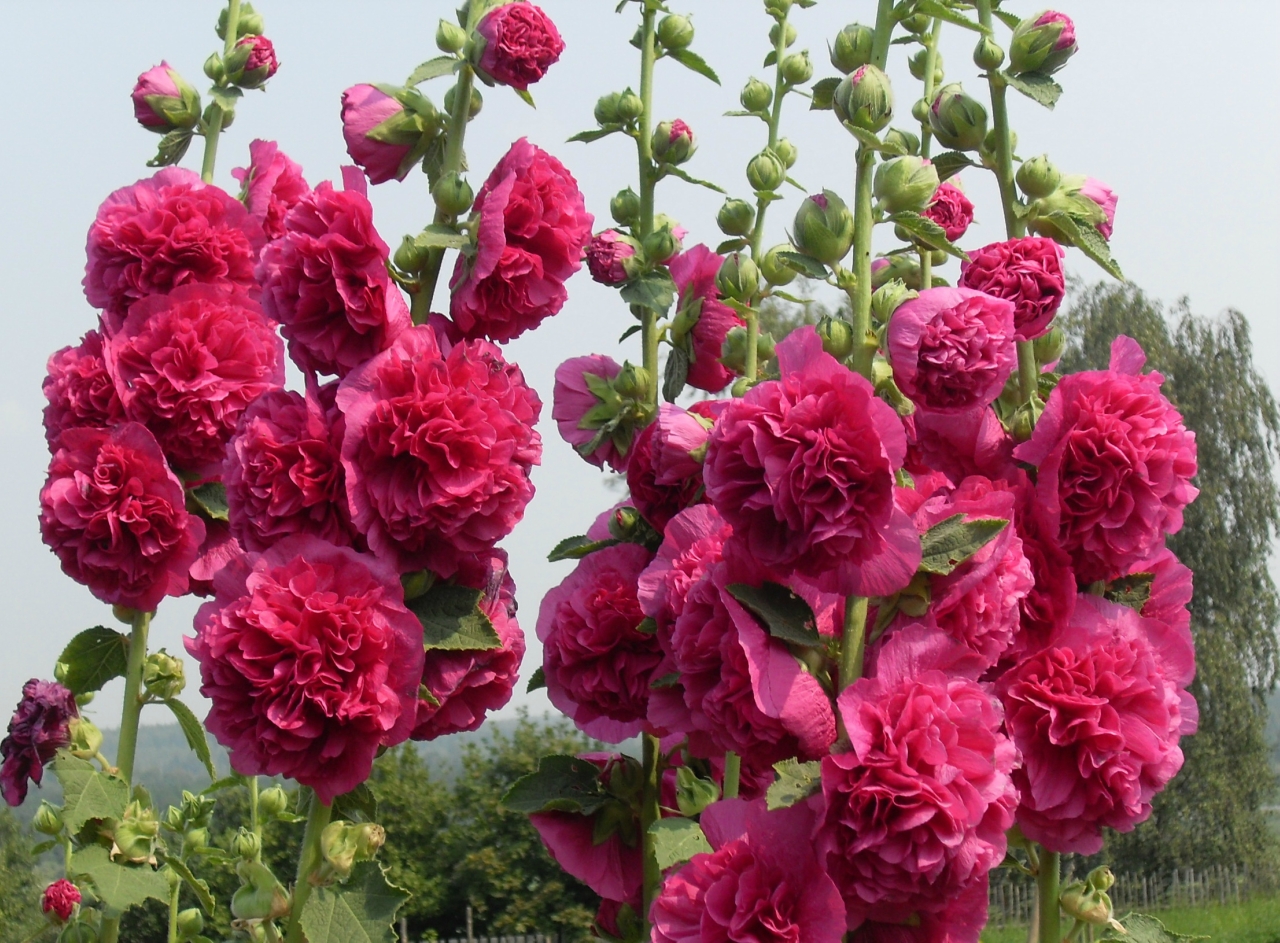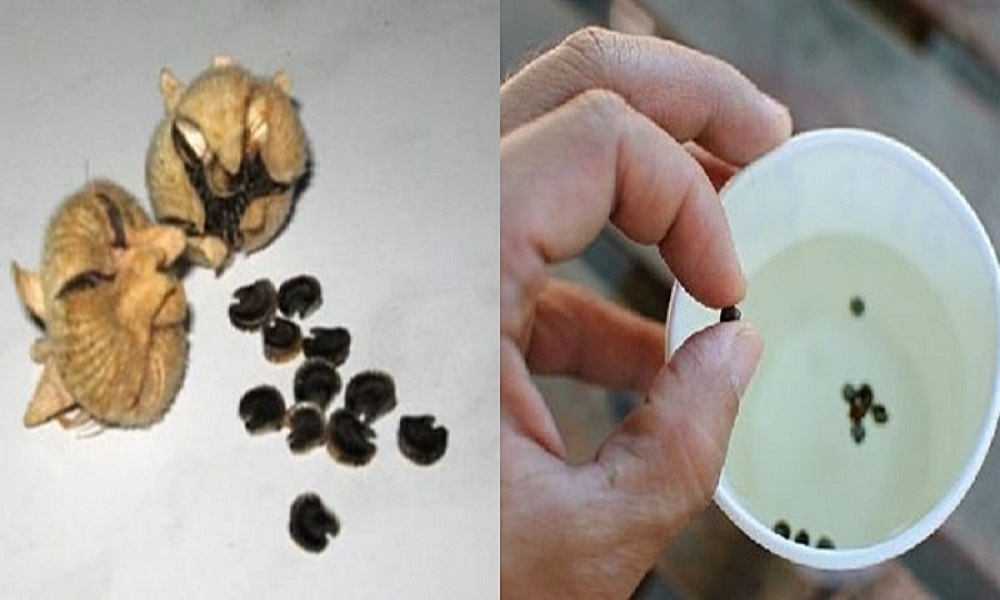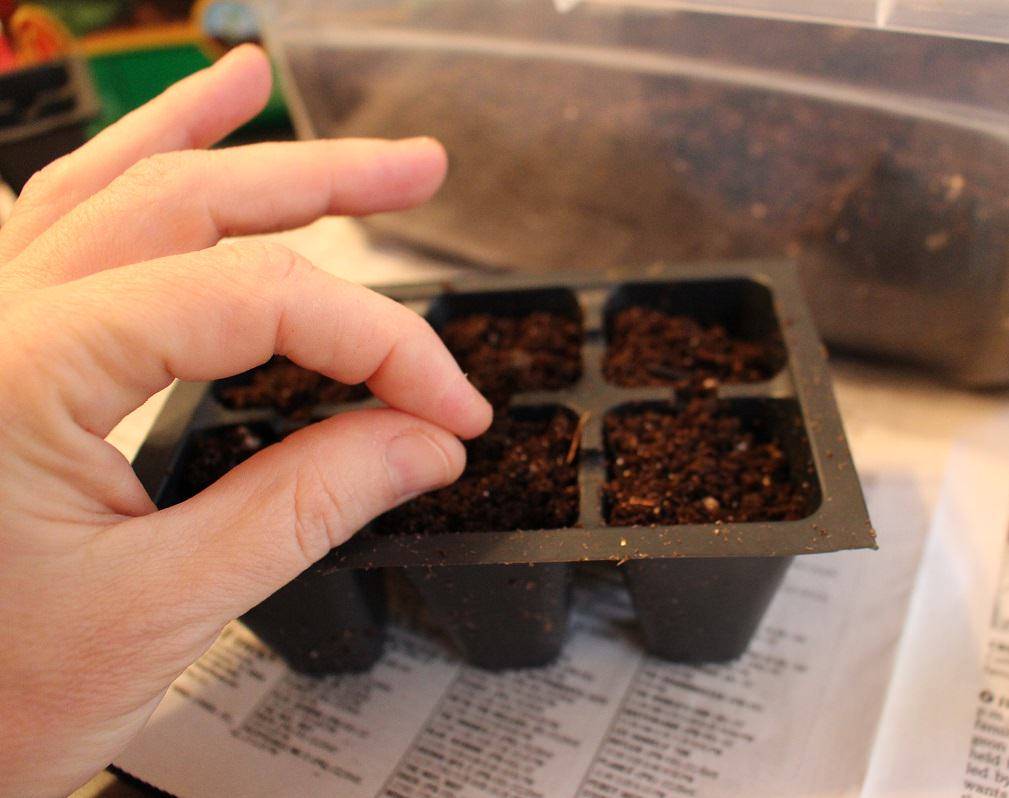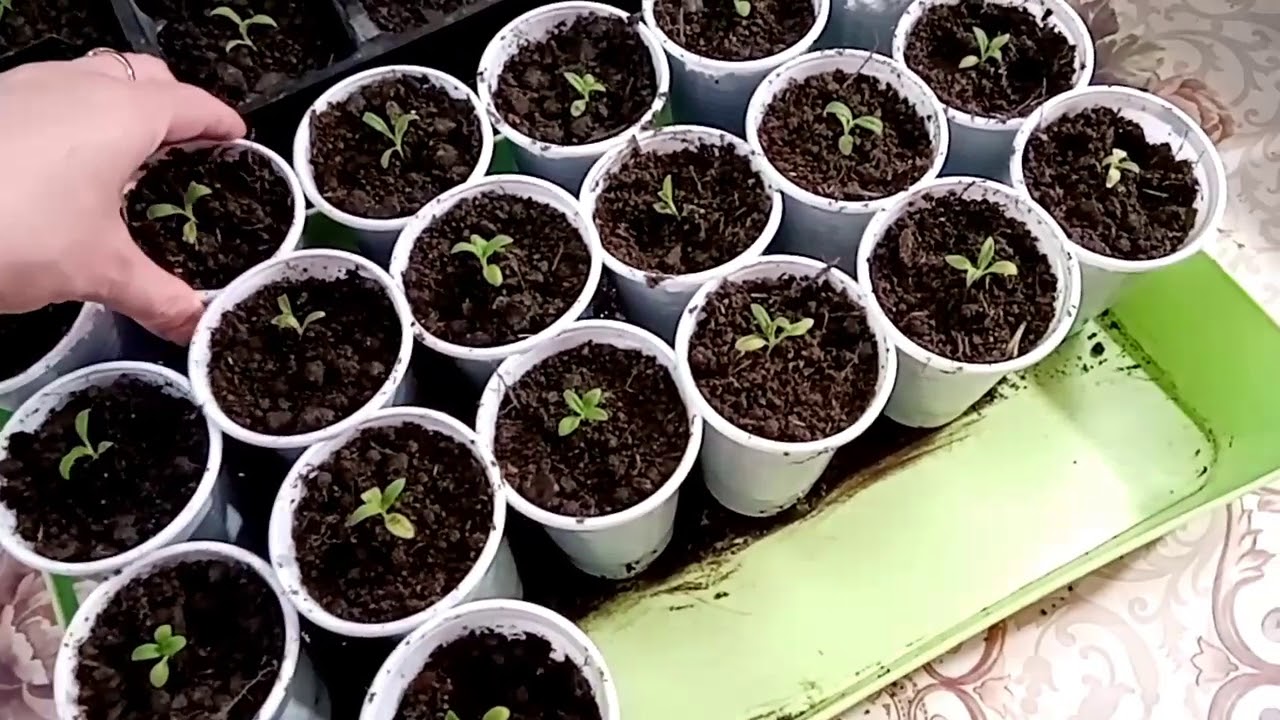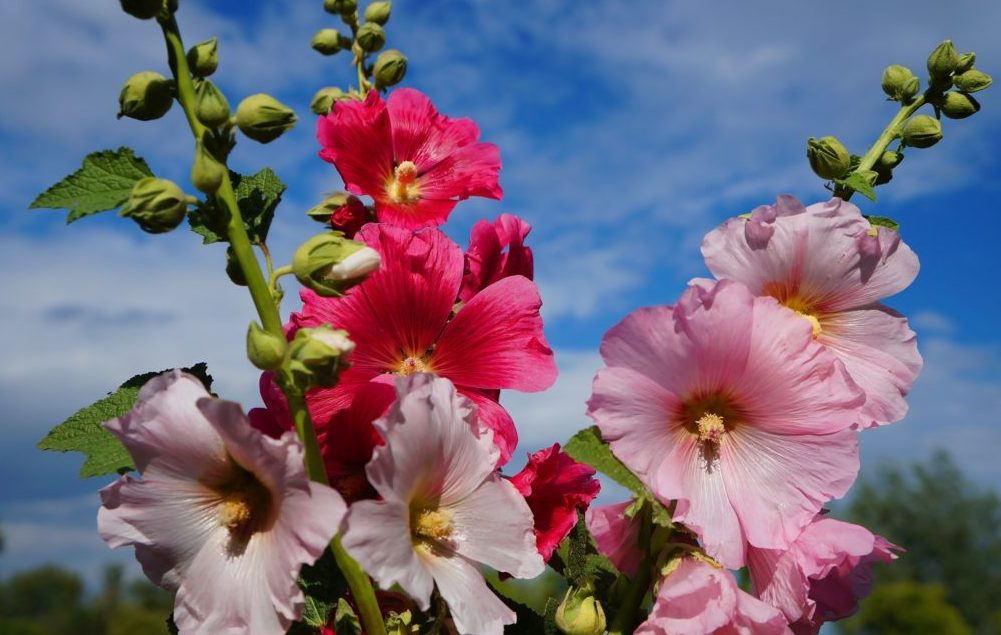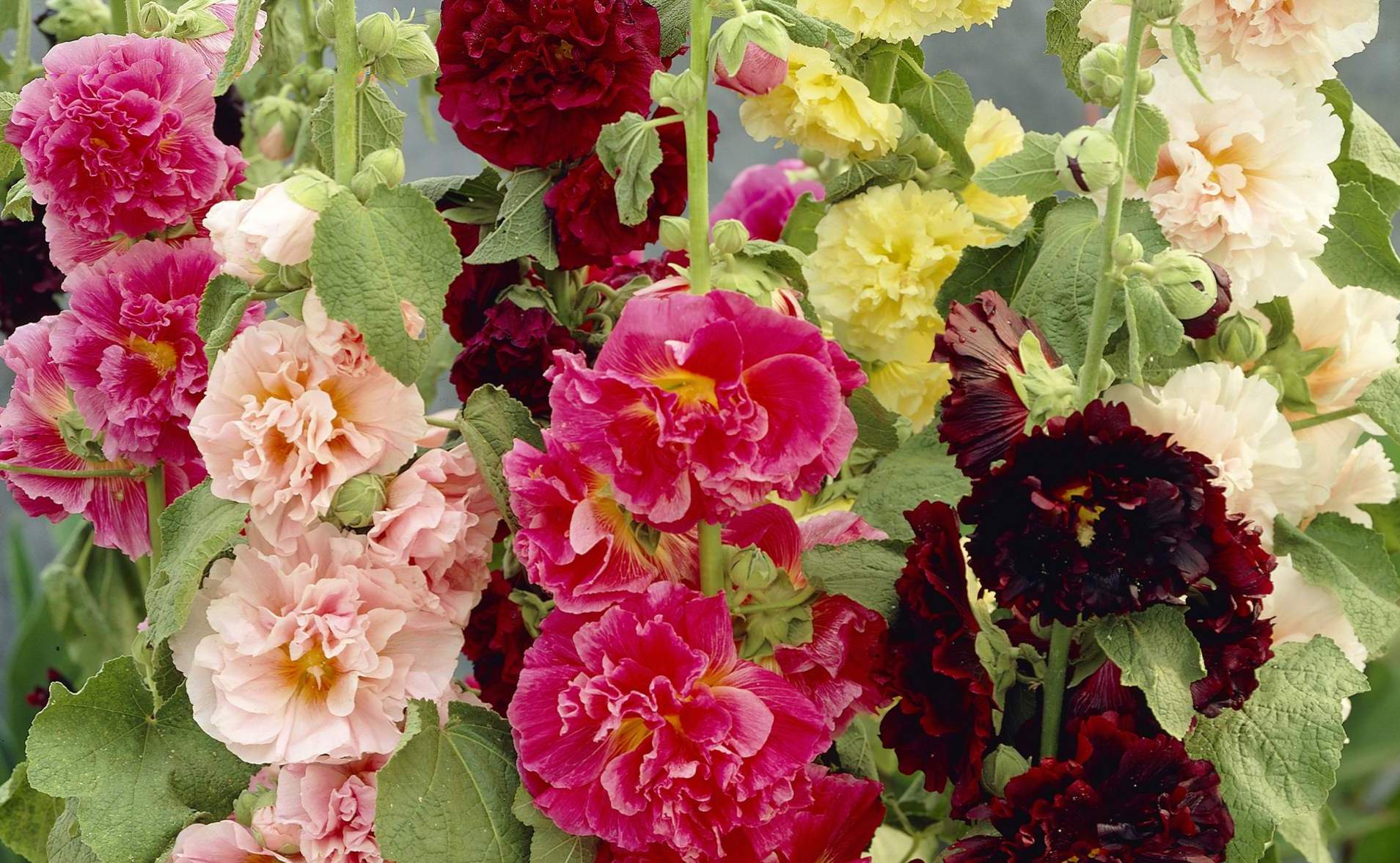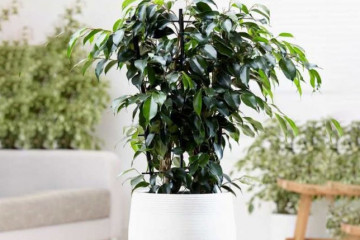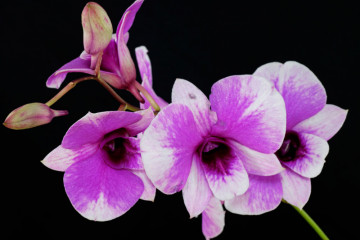Stockrose: rules for planting and caring for mallow, flower reproduction
Content:
Stockrose immediately attracts attention, its long stem, covered with large buds of a varied color palette, can be seen from afar. The plant is mainly used in the rural landscape, but recently the flower can often be seen in city parks and squares. The blooming culture gained particular popularity for its unpretentious cultivation.
General description of the plant
The rose bayonet belongs to the Malvov family, of which there are slightly more than 70 species. They can be found in different parts of the world:
- in Europe;
- Asia;
- the northern part of the African continent;
- America.
The plant is familiar to many under the name "mallow" and "kalachik", this is the name of the flower by Russian growers.
A flowering culture has a straight, ascending, or, conversely, a recumbent stem. In young plants, it is covered with fluff, with growth it begins to become bare. An adult flower can reach 250 cm in height, although there are also smaller representatives.
The roots of the plant are long, powerful and well branched. They can be buried two meters into the ground, this feature allows flowers to tolerate well even the most severe winters.
Mallow blooms throughout the summer season, it drops some buds and sets others.
When to plant seeds for seedlings
Every florist and gardener knows that plants will grow much better if planted on a specific day, taking into account the phase of the moon. There is even a special lunar sowing calendar, which is followed by every self-respecting farmer.
It contains clear dates when it is necessary to plant a particular plant. According to these data, it is most favorable to sow stockrose varieties in the following numbers:
- annuals, March - 1-4, 20-23, 28-30 inclusive;
- annuals, April - 1, 18-21, 24-26, 29;
- perennials, March - 1, 3-5; 22-24, 28-30;
- perennials, April - 1, 6-8, 20, 21, 29.
The planting of a flowering culture begins in the last days of February, and this period lasts until mid-April. Inhabitants of regions with cold climates do it in late spring. In temperate climates, the optimal time is mid-March.
Presowing seed preparation
Any sowing measures must be started with preparation. If a vegetable crop is grown, then preventive actions are taken against diseases and various pests. With regard to flowers, gardeners carry out work that helps to speed up the process of germination of seed, and then - actively growth and development.
In order for the stockrose seeds to hatch faster in the substrate, they must first be soaked in water or wrapped in a damp cloth. It will be enough to keep them in warm liquid for about 10 hours. During this time, the seeds will be nourished and will sprout faster.
This process will go even faster if you use purchased stimulants. The list of the best drugs includes:
- Epin;
- Kornevin;
- Gibberross.
These funds will not only reduce the germination time of the planting material, but also provide it with rapid growth. In some cases, the drugs even save weak, diseased plants, so their benefits are invaluable. Many flower growers use them not only for seed treatment, but also as irrigation water.
Preparing the soil for seedlings
How blooming and healthy a plant will be depends on the quality of the substrate. Malta is not particularly demanding, but it will still be more comfortable in fertile and nutritious soil.
Stockrose prefers loose soil with good water and air permeability, with a normal acidity level that varies between 6.0-7.0 pH.
For home flowers, you can buy ready-made complexes; lush and well-developed flowers grow in such a soil. For open ground, you can make a mixture yourself, it must be added to:
- sod land;
- peat;
- humus;
- compost.
The last two components make the soil looser and lighter.
Sowing seeds
This is a fairly simple process, for which you need to prepare special trays or use plastic cups. Fill the container with etched soil, place in the center one by one and cover it with a small layer of soil.
Then the ground should be moistened using a spray bottle and covered with foil. In an impromptu greenhouse, the temperature should not be lower than +23 degrees. The containers must be placed on a sunny windowsill. After emergence, polyethylene is removed.
Seedling care
After the sown seeds have sprouted and grown three leaves, they must be hardened so that they adapt faster in the open field. In no case should they be drastically taken out to the open balcony and, even more so, put the container in the refrigerator.
Hardening is carried out in a gradual mode, this is done by lowering the temperature in the room in which they are located.
It is not difficult to take care of the seedlings, you need to act as follows:
- Seedlings need good illumination, the rose bayonet flower loves light. In insufficient light, it begins to stretch and break. If the room is dark, then you need to additionally install fluorescent lamps. It is best if they are located a fair distance from the seedlings, so as not to burn the foliage.
- Watering procedures are carried out as the substrate dries, that is, the earth should not peel off the walls of the container. The water should be soft and warm, it is best to stand it for several days.
- Two-week-old seedlings need to be fed; liquid nitrogen fertilizer is perfect for this. It will provide fast foliage growth. At the same time, a root growth stimulant can be introduced, since this plant must have a powerful rhizome in order for it to withstand high stockrose.
Open ground transplant
Before proceeding with the transplant, you need to take care of the place where you plan to plant the rose in the future. When choosing a site for a plant, you should pay attention to the following important aspects:
- for high varieties, a place is selected where there are no drafts and strong winds - the stems will break from gusts, and the buds will crumble;
- a sunny area is needed, in the shade these flowers will not bloom profusely;
- wetlands should be avoided, for this culture, an excess of moisture is destructive;
- between tall representatives you need to maintain a distance of 60 cm, 30 cm is enough for undersized ones.
Having chosen a place, you can start planting flowers. It is necessary to make holes, the size of which will be slightly larger than the size of the root system. Pour the prepared substrate into the pit, place a seedling in the center and sprinkle with all the remaining earth. At the end, spill a hole with settled water.
Plant care
A blooming culture is considered not particularly whimsical in its content, but still it is necessary to provide standard care procedures for it. Not only external attractiveness will depend on them, but also the frequency, as well as the abundance of flowering.
Growing a rose stock and caring for it:
- Watering is carried out as the earth dries up, but it is strictly forbidden to overflow the flowering culture. This can cause rotting of the shoots. It is also necessary to try not to flood the axils of the leaves, as water can become a kind of lenses on which the sun's rays will focus. This, in turn, can cause thermal burns. Watering is carried out at the root.
- Fertilization. Top dressing is selected taking into account the type of flower. A complex of minerals and organics is considered universal; they are added twice a season.
- Mulching. A necessary measure for stockroses, peat and compost are suitable as mulch, they will not allow the soil to dry out.
Also, the plant needs a garter so that the long stems do not bend to the ground, do not break. It is best to use a durable and natural material for this.
The best varieties of stockrose
Scientists breeders have bred a huge number of varieties, there are 77 species in total. They differ in size, appearance and maintenance requirements.
Common mallow
This plant can most often be found in garden plots, in park areas. The perennial variety has a wide variety of colors, the buds can be from light yellow to black.
The most popular varieties among Russian florists:
- Black Pyramid - famous for its color, it is rare in this variety. Large buds are collected in spike-shaped inflorescences. Annual flowers are known for their unpretentiousness, so even an inexperienced gardener can easily cope with them.
- The mulatto is an excellent representative of the Maltese stockrose. The unusual appearance of the plant attracts the attention of passers-by with its racemose inflorescences, in which the buds are collected. The shade can range from dark chocolate to black. Flowers love the sun, so they can easily tolerate drought.
Terry malta
This blooming crop is considered to be one of the most beautiful of all stockrose varieties. She also pleases with her color scheme. Most often in stores you can find the following varietal variety:
- Carnival is a tall, biennial plant, growing up to 170 cm, with large double buds. As for flowering, it is very abundant and long, begins in mid-July and lasts until the end of September. Most often, these roses are used in landscape design as a fence, they are also suitable for bouquets.
- The royal rose is available in different colors: red, purple, pink and white. Most often, this crop is decorated with park beds, mixborders, it is also suitable for cutting. The plant pleases with flowers from July to September.He needs fertile soil and a well-lit area. The variety can be propagated by cuttings and seeds.
There are also simpler varieties, for example, wrinkled, pink and forest stockrose, they can be found even in nature. With proper care, they will look as good as garden ones.
All representatives of the stockrose are widely used in landscape design. These flowers are loved for their functionality, beauty and unpretentiousness in care and maintenance. Growing these flowers is quite simple, so even a beginner can handle them.
